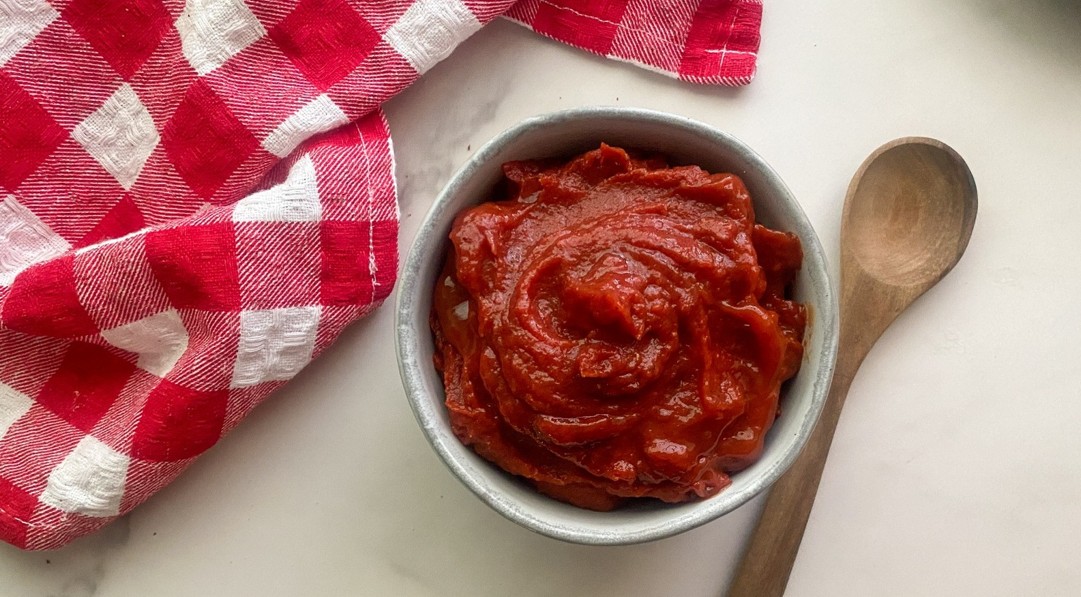
Ah, ketchup. The quintessential condiment. For many, it’s a staple, gracing everything from fries and burgers to eggs and hot dogs. But have you ever stopped to think about what’s really in that familiar red bottle? Or, more excitingly, imagined the incredible depth of flavor you could achieve by making it yourself?
Get ready to ditch the store-bought stuff, because crafting your own homemade ketchup is not only surprisingly simple, but it also opens up a world of fresh, vibrant taste that simply can’t be replicated commercially.
Why Go Homemade? (Beyond Just Bragging Rights!)
- Unbeatable Flavor: This is the #1 reason. Homemade ketchup tastes fresh. It’s bursting with bright tomato notes, balanced sweetness, and a complex spice profile that dances on your tongue.
- Control Your Ingredients: Say goodbye to high-fructose corn syrup, artificial colors, and preservatives. You decide exactly what goes into your ketchup, making it healthier and customizable to your dietary needs.
- Adjust to Your Taste: Love it sweeter? Prefer a little more tang? Want a spicy kick? You’re the chef! Tailor the sweetness, acidity, and spice level to your perfect preference.
- It’s a Fun Project! There’s something deeply satisfying about creating a pantry staple from scratch. Plus, your friends and family will be so impressed.
The Anatomy of Awesome Ketchup: Key Ingredients
Before we dive into the steps, let’s look at the core components of a truly great homemade ketchup:
- Tomatoes: The foundation! Canned crushed or diced tomatoes are often the easiest and most consistent option, especially outside of peak tomato season. Go for good quality, organic if possible. If you have an abundance of ripe, fresh Roma or plum tomatoes, you can absolutely use those too – just blanch, peel, and seed them first.
- Vinegar: Provides that essential tangy kick. Apple cider vinegar is a popular choice for its mellow, fruity notes, but white vinegar works for a sharper tang.
- Sweetener: Balances the acidity and deepens the flavor. Granulated sugar, brown sugar (for a molasses-y depth), honey, or maple syrup can all be used.
- Aromatics: Onion and garlic are typically sautéed to build a flavorful base.
- Spices: This is where the magic happens! Don’t be shy. Classic ketchup spices include allspice, cloves, cinnamon, paprika, black pepper, and often a touch of mustard powder or celery seed.
Your Step-by-Step Guide to Irresistible Homemade Ketchup
This recipe yields about 2-3 cups of delicious ketchup.
What You’ll Need:
- Large, heavy-bottomed pot or Dutch oven
- Blender (immersion blender or standard blender)
- Fine-mesh sieve (optional, for super smooth ketchup)
- Clean jars or bottles for storage
Ingredients:
- 1 tbsp olive oil
- 1 medium onion, finely chopped
- 2 cloves garlic, minced
- 2 (28-ounce) cans crushed or diced tomatoes
- 1/2 cup apple cider vinegar (or white vinegar for a sharper taste)
- 1/4 cup granulated sugar (or more/less to taste, or use brown sugar, honey, maple syrup)
- 1 tsp salt (or to taste)
- 1/2 tsp ground allspice
- 1/2 tsp ground cloves
- 1/2 tsp ground cinnamon
- 1 tsp smoked paprika (optional, for depth)
- 1/2 tsp black pepper
- 1/2 tsp mustard powder (optional, but highly recommended for classic flavour)
- Pinch of cayenne pepper (optional, for a subtle kick)
Instructions:
- Sauté the Aromatics: Heat the olive oil in your large pot over medium heat. Add the chopped onion and cook, stirring occasionally, until softened and translucent, about 5-7 minutes. Add the minced garlic and cook for another minute until fragrant.
- Add Tomatoes & Liquids: Pour in the crushed tomatoes, apple cider vinegar, and your chosen sweetener. Stir well.
- Introduce the Spices: Add the salt, allspice, cloves, cinnamon, paprika, black pepper, mustard powder, and cayenne (if using). Stir everything together until well combined.
- Simmer for Flavor: Bring the mixture to a gentle simmer. Reduce the heat to low, cover partially, and let it cook for at least 45-60 minutes, stirring occasionally. This allows the flavors to meld and the tomatoes to break down further.
- Blend Until Smooth: Remove the pot from the heat. Carefully use an immersion blender directly in the pot, or transfer the mixture in batches to a standard blender, and blend until completely smooth. Be cautious when blending hot liquids!
- Strain (Optional, for Ultra-Smooth Ketchup): For that super silky, store-bought texture, pass the blended ketchup through a fine-mesh sieve, pressing it with a spoon or spatula to extract all the liquid and pulp. Discard any remaining solids.
- Reduce to Perfection: Return the smooth ketchup to the pot. Cook uncovered over low heat, stirring frequently, for another 30-60 minutes (or even longer), until it thickens to your desired consistency. It should slowly bubble and reduce, leaving a trail when you run a spoon through it. Taste and adjust seasonings (salt, sugar, vinegar) as needed during this stage.
- Cool & Store: Once thickened, remove from heat and let the ketchup cool completely. Transfer to clean, airtight jars or bottles.
Tips & Variations for Your Ketchup Adventure:
- Sweetness Scale: Start with less sugar than the recipe calls for, then add more incrementally when you taste test at the end.
- Spicy Kick: Amp up the cayenne, or add a pinch of chili powder for a smoky heat.
- Smoky Flavor: A tiny splash of liquid smoke or a generous amount of smoked paprika can add a wonderful, deep dimension.
- Vinegar Variety: Experiment with red wine vinegar or balsamic vinegar (in smaller amounts) for different flavor profiles.
- Herbaceous Notes: A sprig of fresh thyme or a bay leaf added during the initial simmer can add subtle complexity, just remember to remove them before blending.
- Consistency Control: If it’s too thin, simmer longer. If it’s too thick, add a tablespoon or two of water or vinegar to thin it out.
Storage:
Homemade ketchup, without commercial preservatives, will last for about 2-3 weeks in the refrigerator in an airtight container. For longer storage, you can freeze it in freezer-safe containers for several months. (Canning is an option for very long-term storage, but requires specific equipment and knowledge of safe canning practices).
Your Ketchup Journey Begins!
Making your own ketchup is a rewarding culinary journey that will elevate your meals and impress anyone who tries it. So, gather your ingredients, set aside an afternoon, and prepare to be amazed by the vibrant, fresh, and utterly delicious taste of homemade ketchup.







